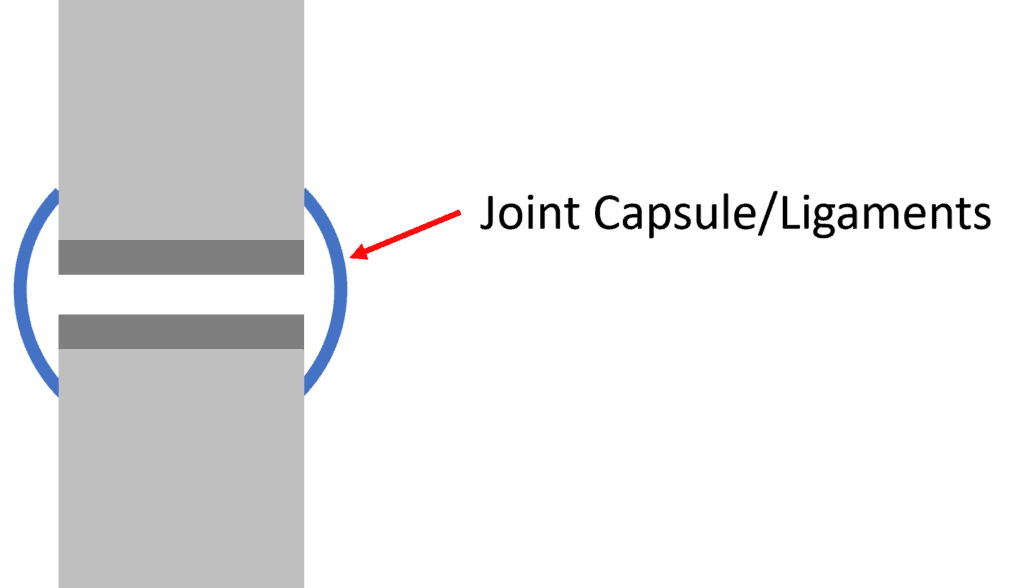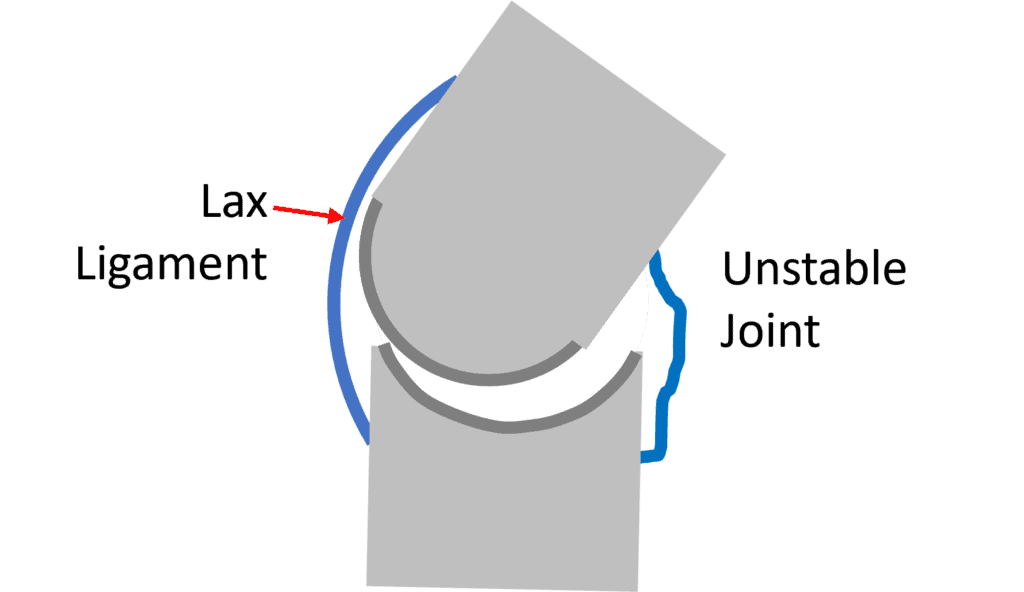Joint Sounds and How Ligaments Respond to Orthobiologics
Some patients with instability experience a mid-point in healing that can cause anxiety. It’s this time when things are tighter, but the number of pops, cracks, and instability episodes can climb rather than go away. So let’s dig into why this is and what’s happening.
A Typical Joint

Above we have a typical joint with the bone shown in light grey, the cartilage in dark grey, and the joint capsule/ligaments as shown. Instability happens when the joint surfaces move too much in the wrong way because the ligaments become lax as shown below:

Joint Sounds
What are the two very different sounds a joint can make?
- Pops/cracks
- Crepitus
Pops and cracks are caused by nitrogen bubbles in joint fluid. Crepitus is caused by roughened joint cartilage (arthritis) or instability.
What Do Joint Sounds Mean?
If you don’t have loads of arthritis, crepitus in a joint is not a good sign. For example, even if you don’t have knee pain, crepitus means you’re more likely to get arthritis in the future (1). Hence, if your joints start to crack, getting evaluated for arthritis is a good idea.
Why Do Joints Suddenly Start to Make Sounds?
While all joints make cracking noises from time to time due to nitrogen bubbles, when they start to make sounds frequently it’s usually caused by instability.
How Does Instability Impact Joint Sounds?
When a joint is very unstable, it can pop and crack. As the ligaments get tighter, the sounds can get more and higher pitched. If the ligaments completely heal, then the crepitus should go away (unless there’s arthritis already).
This is a common question that patients ask after a ligament procedure. Early on in the ligament healing process, the joint sounds can get more and higher pitched. This is because things are just a little tighter. Once ligament healing progresses, the sounds get less.
The upshot? Understanding what joint sounds mean can help you understand what’s good and bad. Sometimes when the sounds get more, that’s a good thing.
__________________________________
References:
(1) Lo GH, Strayhorn MT, Driban JB, Price LL, Eaton CB, Mcalindon TE. Subjective Crepitus as a Risk Factor for Incident Symptomatic Knee Osteoarthritis: Data From the Osteoarthritis Initiative. Arthritis Care Res (Hoboken). 2018 Jan;70(1):53-60. doi: 10.1002/acr.23246. Epub 2017 Dec 8. PMID: 28470832; PMCID: PMC5671376.

If you have questions or comments about this blog post, please email us at [email protected]
NOTE: This blog post provides general information to help the reader better understand regenerative medicine, musculoskeletal health, and related subjects. All content provided in this blog, website, or any linked materials, including text, graphics, images, patient profiles, outcomes, and information, are not intended and should not be considered or used as a substitute for medical advice, diagnosis, or treatment. Please always consult with a professional and certified healthcare provider to discuss if a treatment is right for you.